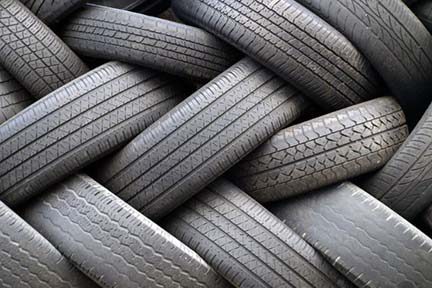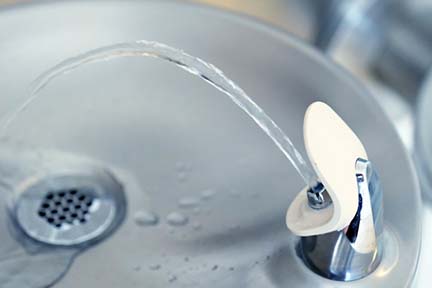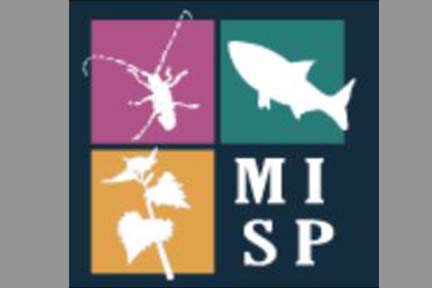FOR IMMEDIATE RELEASE
February 23, 2024
EGLE Media Office, EGLE-Assist@Michigan.gov, 517-284-9278
EGLE announces $95.24 million in MI Clean Water grants to help upgrade water infrastructure, protect health and the environment
Water main replacements in Muskegon Heights, wastewater plant upgrades on Mackinac Island, and lead service line replacements in multiple communities are the goals of more than $95 million in state grants recently awarded to Michigan communities.
The MI Clean Water Plan grants through the Drinking Water State Revolving Fund (DWSRF), the Clean Water State Revolving Fund (CWSRF), and support from the federal American Rescue Plan Act (ARPA) aim to help communities upgrade aging infrastructure, ensure healthy drinking water, and protect Michigan’s environment.
Seventy percent of Michiganders are served by more than 1,000 community wastewater systems and a similar percentage get drinking water from community water systems. Those systems often struggle to find resources to address legacy issues like aging drinking water and stormwater facilities and emerging challenges like new standards for Per- and Polyfluoroalkyl Substances (PFAS) “forever chemicals.”
Governor Gretchen Whitmer, the Michigan Legislature, and federal agencies have ramped up funding for aging water infrastructure – a critical move to help ensure those water systems continue to protect public health and the environment, including Michigan’s unmatched freshwater resources.
More than half of EGLE’s budget has traditionally passed through to Michigan cities, towns, villages, and other local government agencies to finance critical improvements that help them better protect residents and our natural resources.
Grant roundup
Recent grants through the DWSRF:
- Village of Sheridan for $3,985,000. This project involves construction of an iron removal plant and water system improvements in the Village of Sheridan. This includes upsizing the watermain, looping to eliminate dead ends, and lead service line replacement. A new watermain will be installed between Well No. 2 and the iron removal plant.
- City of Muskegon Heights for $19,847,000. The project includes the replacement of aging water mains, improvement of water flows, critical valve installation, and improvement of reliability in the City of Muskegon Heights. Water main replacement will occur in two project areas: 1) along Broadway Avenue from Glade Street to Reynolds Street, which includes the replacement of approximately 5,650 linear feet of cast iron watermain and 57 lead service line replacements, and 2) along Sanford Street from Oakwood Avenue to Norton Avenue, which includes the replacement of approximately 1,350 linear feet of cast iron watermain and 24 lead service line replacements. In addition to the full lead service line replacements along these water main corridors, approximately 530 lead line replacements will also be completed in other areas.
- City of Inkster for $10,905,000. This project involves replacement of undersized watermains, lead service line replacements, and elimination of a watermain dead end in the City of Inkster. A total of 145 lead service lines will be replaced as a part of this project.
Recent grants through the CWSRF:
- Pontiac-Clinton River Drain Drainage District (Oakland County) for $800,000. The Pontiac-Clinton River No. 1 Drain Drainage District is a stormwater system located in the City of Pontiac. This project involves stormwater pipe rehabilitation, including spot lining and grouting of existing storm sewer pipes and manholes.
- City of Mackinac Island for $39,700,000. This project consists of upgrades to the existing wastewater treatment plant (WWTP), including a new headworks facility containing screening and grit removal, three primary clarifiers, three moving bed biofilm reactor trains (each containing two reactors), rapid mix and flocculation basins with mixers for chemical feed, four secondary clarifiers, ultraviolet disinfection, effluent pump station, effluent equalization, effluent forcemain improvements, and sludge handling processes. New headworks, process, and maintenance buildings will be constructed, as well as upgrades to the existing control building. Electrical, control, and instrumentation upgrades will be done throughout the plant.
Earmarks through Federal American Rescue Plan Act:
- City of Saline for $5,000,000. This project supports rehabilitation of the City of Saline’s WWTP by managing wet weather flows and critical technology upgrades. Rehabilitation of the WWTP is designed to improve severe weather resilience and mitigate environmental contaminants in the wastewater discharge that feeds into Michigan’s surface waters and the Great Lakes system. A new headworks facility will be constructed to provide fine screening of the influent wastewater to improve plant operation. Wet weather flows will be improved by the construction of a wet weather storage tank and new primary and secondary clarifiers with modifications to four existing clarifiers. Additionally, aging infrastructure, such as the rotating biological contactors and floating cover digester, will be replaced with modern technology to increase reliability and treatment performance. Updates include upgrading to activated sludge pumping and blower facilities, improving biosolids management, adding new aeration tanks with fine pore diffusers, and completing existing digester tank modifications.
- City of Milan for $3,600,000. This project involves wastewater treatment upgrades at the City of Milan WWTP. This will include headworks improvements, ultraviolet (UV) disinfection improvements, meters, pumps, and mixer replacements, upgrading the oxidation ditch and clarifiers, and replacing the boiler heating system.
Grants through ED-SDC:
- City of Ironwood for $11,400,000. The City of Ironwood will use this grant to address concentrations of manganese that have exceeded safe levels. The ED-SDC grant program provides states and territories with grants to public water systems in small or disadvantaged communities to address emerging contaminants, including PFAS.
Descriptions of funding sources
Drinking Water State Revolving Fund: Low-interest loan program to help public water systems finance the costs of replacement and repair of drinking water infrastructure to protect public health and achieve or maintain compliance with federal Safe Drinking Water Act requirements. The DWSRF provides loans to water systems for eligible infrastructure projects. As water systems repay their loans, the repayments and interest flow back into the DWSRF to support new loans. ARPA funding operates as a grant and may be used in combination with loan dollars to reduce the financial burden on communities to pay for capital improvement debt. ARPA funded grants awarded this fiscal year: $218,398,719.
Clean Water State Revolving Fund: Used by local municipalities to finance construction of water pollution control projects. These projects include wastewater treatment plant upgrades and expansions, combined or sanitary sewer overflow abatement, new sewers designed to reduce existing sources of pollution, and other publicly owned wastewater treatment efforts that improve water quality. The CWSRF can also finance stormwater infrastructure projects to reduce nonpoint sources of water pollution caused by things like agricultural runoff to lakes, streams, and wetlands. As with the DWSRF, ARPA funds can be used in conjunction with CWSRF loan dollars, thereby reducing the debt communities pay for infrastructure improvements. ARPA-funded grants awarded this fiscal year: $137,982,009.
Drinking Water Asset Management Program: Provides grant funding to assist drinking water suppliers with asset management plan development and updates, and/or distribution system materials inventories as defined in Michigan’s revised Lead and Copper Rule. Awarded this fiscal year: $19,695,817.
Consolidation and Contamination Risk Reduction Program: Established to aid drinking water systems to help remove or reduce PFAS or other contaminants. Awarded this fiscal year: $20,336,215.
Substantial Public Health Risk Project Program: Protects public and environmental health by removing direct and continuous discharges of wastewater from surface or groundwater. Awarded this fiscal year: $8,000,000.
Emerging Contaminants in Small or Disadvantaged Communities Grant Program: Provides states and territories with grants to public water systems in small or disadvantaged communities to address emerging contaminants, including PFAS.
Additional Background
- Since January 2019 the State of Michigan has invested over $4 billion to upgrade drinking water, stormwater, and wastewater facilities across the state, supporting over 57,000 jobs.
- In 2022, Governor Whitmer signed a package of bills to help communities access funding for water infrastructure.
|







